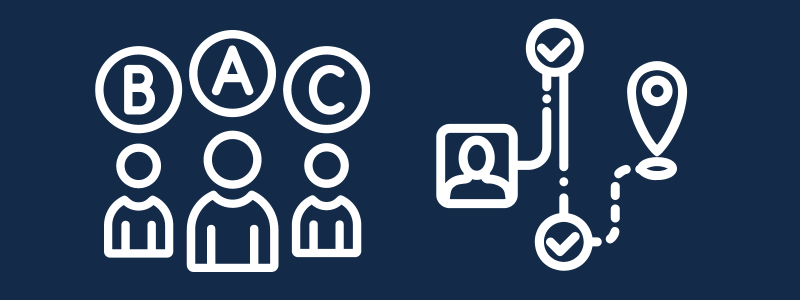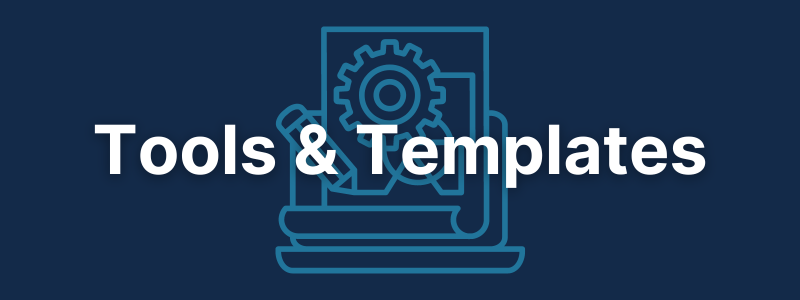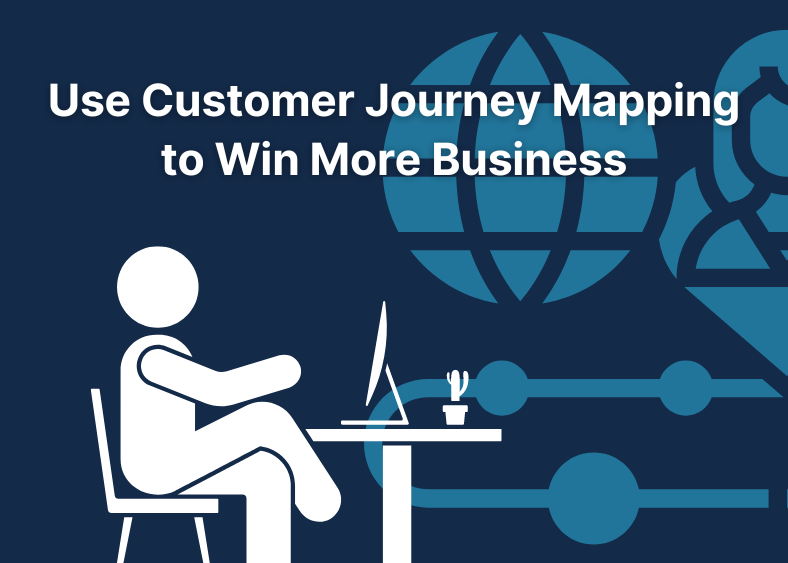Imagine you’re on a road trip without a map. You might eventually reach your destination, but think of the time and frustration saved with clear directions. This is what customer journey mapping does for businesses – it offers a roadmap to understand and enhance every step of the customer experience.
With an average ROI sitting at 3800% for email marketing alone, imagine the untapped potential when you apply such precision across all touchpoints! Yet, amidst the sea of competition online, standing out requires more than guesswork; it demands strategic navigation through each phase of your customers’ interactions. And then, you need a client portal & onboarding platform that allows you to customize the client experience and touchpoints with your organization.
What Is Customer Journey Mapping?

Customer journey mapping is a game-changer for businesses looking to level up their customer experience. It’s a powerful tool that helps you imagine yourself in your customers’ shoes and see your brand through their eyes.
By creating a visual story of your customers’ interactions with your business, you can pinpoint exactly where you’re hitting the mark and where you might be missing it. It’s like having a secret weapon that lets you read your customers’ minds.
Benefits of Customer Journey Mapping
So, what’s in it for you? Plenty. Customer journey mapping can help you:
- Identify pain points and opportunities to improve the customer experience
- Increase customer satisfaction and loyalty
- Align your team around a shared understanding of the customer
- Make data-driven decisions to optimize your marketing, sales, and support efforts
Plus, it’s a fun and collaborative process that gets everyone in your organization excited about putting the customer first.
Key Components of a Customer Journey Map
Every customer journey map is unique, but they all share some common elements:
- Persona: A detailed description of your target customer, including their goals, challenges, and preferences.
- Timeline: The series of steps your customer takes to interact with your brand, from awareness to purchase and beyond.
- Emotion: How your customer feels at each stage of the journey, from frustrated to delighted.
- Touchpoints: All the ways your customer interacts with your brand, both online and off.
- Channels: The specific methods of communication your customer uses, like email, phone, or social media.
By mapping out these key components, you can create a comprehensive picture of your customer’s experience and identify areas for improvement.
Types of Customer Journey Maps

Not all customer journey maps are created equal. Depending on your goals and the complexity of your customer experience, you can create different types of maps. Here are four of the most common:
Current State Journey Maps
A current state journey map is like a snapshot of your customer’s experience as it stands today. It documents all the touchpoints, interactions, and emotions your customer has with your brand in the present moment.
This type of map is a great starting point for identifying quick wins and areas for improvement.
Future State Journey Maps
A future state journey map, on the other hand, is all about envisioning the ideal customer experience. It’s a blueprint for what you want your customer’s journey to look like in the future, based on your business goals and customer insights.
This type of map helps you set a vision for your customer experience and prioritize initiatives that will get you there.
Day in the Life Journey Maps
A day-in-the-life journey map zooms out even further to look at your customers’ entire daily experience, beyond just their interactions with your brand. It considers things like their routines, social influences, and competing priorities.
This type of map helps you understand your customer’s broader context and identify opportunities to make your brand a more seamless part of their life.
Service Blueprint Maps
A service blueprint map is like a behind-the-scenes look at all the people, processes, and systems that power your customer experience. It maps out both the customer-facing and internal touchpoints, so you can see how everything fits together.
This type of map is especially useful for identifying operational inefficiencies and ensuring a consistent experience across all channels.
How to Create a Customer Journey Map

Ready to start mapping? Here’s a step-by-step guide to creating your own customer journey map:
1. Define Objectives and Personas
Start by clarifying your goals for the mapping process. What do you hope to learn or achieve? Then, based on research and data, create detailed personas for your target customers.
2. Map Out Customer Touchpoints
Identify all the ways your customer interacts with your brand, from initial awareness to post-purchase support. Consider both online and offline touchpoints across all channels.
3. Gather Customer Feedback
Collect feedback from real customers through surveys, interviews, and other research methods. Look for insights into their goals, challenges, and emotional states at each stage of the journey.
4. Analyze and Identify Opportunities
Review your map to identify patterns, pain points, and opportunities for improvement. Prioritize initiatives based on their potential impact and feasibility.
5. Implement Changes and Monitor Results
Put your insights into action by implementing changes to your customer experience. Monitor key metrics over time to track progress and iterate as needed.
Key Takeaway:
Dive into customer journey mapping to see your brand through their eyes, boost satisfaction, and unite your team. It’s a fun way to make sure you’re hitting the mark every step of the way.
Best Practices for Effective Customer Journey Mapping
Creating a customer journey map is a team effort. You need buy-in from all departments, not just marketing or sales.
Involve Cross-Functional Teams
According to Qualtrics, customer journey mapping creates a shared understanding of how a customer interacts with your business at different stages. It also clarifies the roles each team plays in delivering that experience. So make sure to involve:
- Customer service
- Product development
- Sales
- Marketing
Each team member brings valuable insights from their unique customer interactions.
Focus on Customer Perspective
It’s not about you, it’s about them. Put yourself in your customers’ shoes. What are they thinking, feeling, doing at each touchpoint? Lucidchart suggests actually talking to customers to understand their decision-making process. Without a deep understanding of customer needs, your map won’t lead to a better experience.
Use a Collaborative Mapping Tool
Sticky notes on a wall won’t cut it. Choose a journey mapping tool that allows for:
- Real-time collaboration
- Detailed and high-level views
- Feedback and comments
This keeps everyone literally on the same page.
Regularly Update and Iterate
Your customer journey map is a living document. As the market and customer needs change, so should your map. Schedule regular reviews to identify new opportunities and pain points. Continual improvement is key to staying customer-focused.
Leveraging Customer Journey Maps to Improve CX
Okay, you’ve got your shiny new customer journey map. Now what? It’s time to put those valuable insights into action. Use your map to zero in on customer pain points and frustrations. Maybe it’s a clunky checkout process or a lack of support. List out the top issues and prioritize fixes. Even small tweaks can make a big difference in the customer experience.
Enhance Key Touchpoints
Look for moments that matter most to customers. Is it the first time they have used your product? Reaching a support rep? Brainstorm ways to exceed expectations at these crucial touchpoints. FullStory recommends mapping all brand interactions, from social media to the website to support. Nail these, and you’ll have happier customers eager to spread the word.
Personalize Interactions
No one wants to feel like just another number. Use your journey map to identify opportunities to personalize. Segment customers based on their journey and tailor content, offers, and support. Pipedrive suggests tailoring maps to your specific business and customers. The more relevant the experience, the more customer loyalty you’ll build.
Measure and Track CX Metrics
You can’t manage what you don’t measure. Identify key metrics at each stage, like:
- Customer satisfaction score
- Net promoter score
- Churn rate
Track these over time to gauge the impact of your CX improvements. Hold teams accountable and celebrate wins.
Customer Journey Mapping Tools and Templates

While you can start mapping with just a pen and paper, why not tap into some handy tools? From basic templates to robust software, there are plenty of options. Here are a few to get you started: Offers an intuitive interface for creating professional-looking journey maps. Includes a customer journey map template to make it even easier.
Miro
A collaborative whiteboarding platform with a customer journey map template. Ideal for remote teams. A specialized customer journey mapping tool with advanced features like personas and analytics.
Smaply
Another journey mapping software with a user-friendly drag-and-drop interface. Includes pre-built templates and examples. Remember, the tool is less important than the process. Focus on understanding your customers and improving their experience. With the right insights and actions, you’ll be well on your way to customer journey mapping success.
Key Takeaway:
Get everyone on board from customer service to product development for a full picture. Dive deep into your customers’ thoughts and feelings, and use the right tools for collaboration. Keep updating your map as things change, tackle pain points head-on, make those key moments shine, personalize like a pro, measure what matters with CX metrics, and choose the tool that fits your team’s needs.
What to do with a map now that it’s written?
You’ve got this awesome customer journey map. Now what? A map alone doesn’t get your business anywhere. Think of your journey map as a tool to uncover your customers’ wants, needs, and pain points. You’ll use this information to leverage improvements in your business. Here are 3 ways:
Optimize Touchpoints:
To optimize touchpoints, focus on creating consistent and personalized interactions at every customer contact point. Analyze customer data to identify pain points and opportunities for improvement. Streamline processes, reduce wait times, and ensure that all touchpoints align with the brand’s values. For example, a retail store could optimize its touchpoints by offering personalized product recommendations based on purchase history, ensuring quick checkout lines, and providing exceptional customer service through knowledgeable staff.
Create Seamless Experiences:
Seamless experiences involve connecting different touchpoints to form a cohesive customer journey. Consistency in messaging, branding, and tone is crucial. Motion.io is leveraged by hundreds of companies to help them create a seamless–and optimized–customer experience journey for each customer.
Differentiate Your Brand:
Differentiation involves creating a unique and compelling brand identity that sets your business apart from competitors. Since you’ve now identified your target audience’s specific needs and desires, you can tailor your offerings accordingly. Emphasize your brand’s unique value proposition and communicate it consistently across all touchpoints. For example, a luxury hotel can differentiate itself by offering personalized concierge services, exclusive amenities, and impeccable attention to detail.
Conclusion
In our exploration today, we’ve taken apart the concept piece by piece – showing that effective customer journey mapping isn’t just about avoiding pitfalls or getting lost less often; it’s about crafting unforgettable experiences that resonate deeply with people’s needs and desires. From recognizing their first hesitant steps to celebrating long-term loyalty, this approach turns ordinary transactions into meaningful relationships.
Remember, AI may be changing how we operate behind the scenes, but it’s the human touches that make all the difference. Go leverage the power of your team and brand to create a customer experience that blows your competitors out of the water (and then use Motion.io to implement it).

